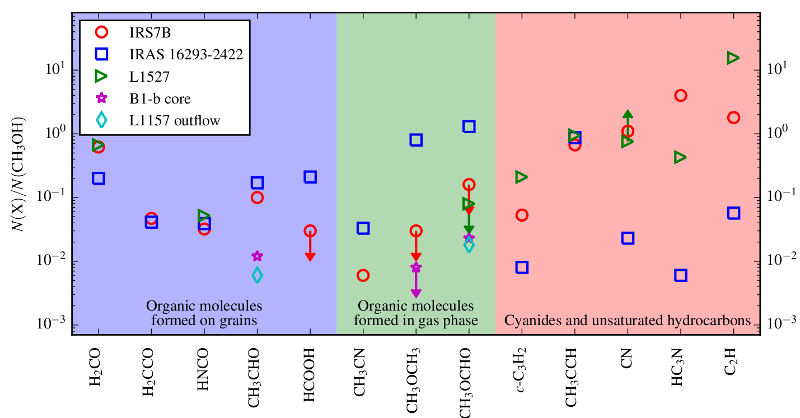| EPoS Contribution |
|
External effects on the chemistry of protostellar envelopes
Johan Lindberg NASA GSFC, Greenbelt, US | |
|
The chemical composition of protostellar envelopes provides valuable
information about the current and previous irradiation environment of
the forming protostar. We have studied the chemical and physical
properties of more than 50 protostellar envelopes in the nearby Corona
Australis and Ophiuchus star-forming regions using the APEX telescope.
Many of the Corona Australis sources are located near the
intermediate-mass star R CrA, and we find that, despite its moderate
luminosity, the irradiation from this star enhances the H2CO
temperatures of several nearby protostellar envelopes from 10 K to at
least 30-40 K. This significantly elevated temperature is of crucial
importance to the chemistry of these envelopes, since it should cause
thermal evaporation of many key species from the dust grain surfaces.
Towards IRS7B, one of the protostars closest to R CrA, we find a chemistry differing strongly from embedded protostars in other surveys (hot corinos and warm carbon-chain chemistry sources, WCCC). We find low abundances of complex organic molecules such as CH3OH, CH3OCH3 and CH3CN, and elevated abundances of CN and some carbon-chain species like HC3N and C2H, although not to the same level as towards typical WCCC sources. We interpret the observed chemical properties as a result of thermal evaporation of CO from the grain mantles and photo-dissociation reactions in the IRS7B envelope, both initiated by the irradiation from R CrA. We will also discuss the latest results from our new astrochemistry code, in particular pertaining chemical differentiation due to external effects such as heating and increased cosmic-ray rates; and compare these results to observations. The code takes into account gas-phase chemistry, thermal evaporation, freeze-out, hydrogenation reactions on the ices, and many other important astrochemical effects. | |
 | |
| Caption: The figure shows abundances relative to CH3OH of several important species from our observations of the externally irradiated source IRS7B (red rings), compared to a typical hot corino (blue squares), a typical WCCC source (green triangles), a quiescent core (purple stars), and a protostellar outflow (turquoise diamonds). The relative abundances of several important organic molecules are an order of magnitude lower in IRS7B than in the hot corino source, while cyanides and carbon chains are over-abundant. | |
| Collaborators: J.K. Joergensen, U Copenhagen, DK Y. Watanabe, U Tokyo, JP S. E. Bisschop, U Copenhagen, DK N. Sakai, U Tokyo, JP S. Yamamoto, U Tokyo, JP S.B. Charnley, NASA GSFC, US M.A. Cordiner, NASA GSFC, US |
Key publication
Suggested Session: Chemistry |

